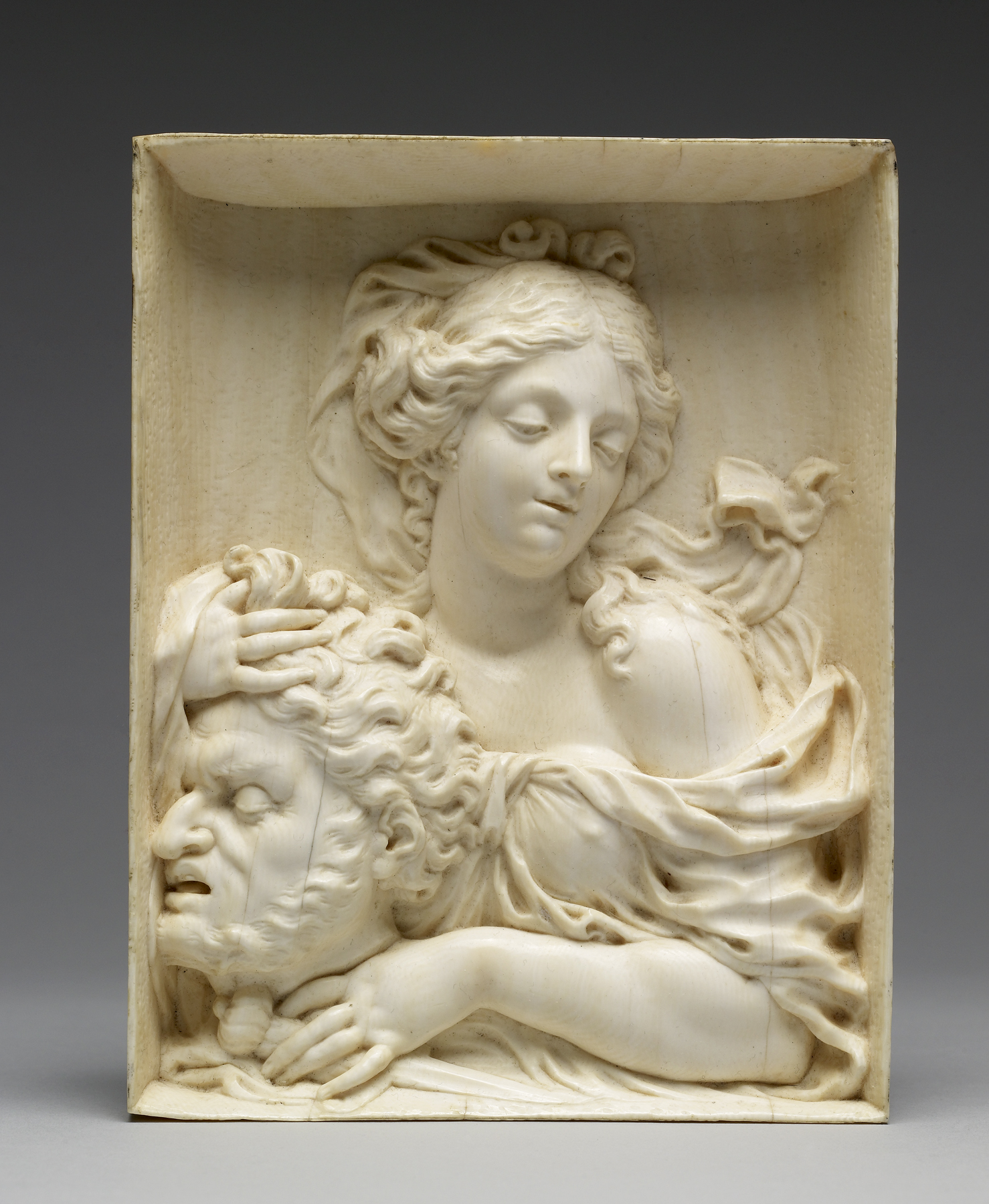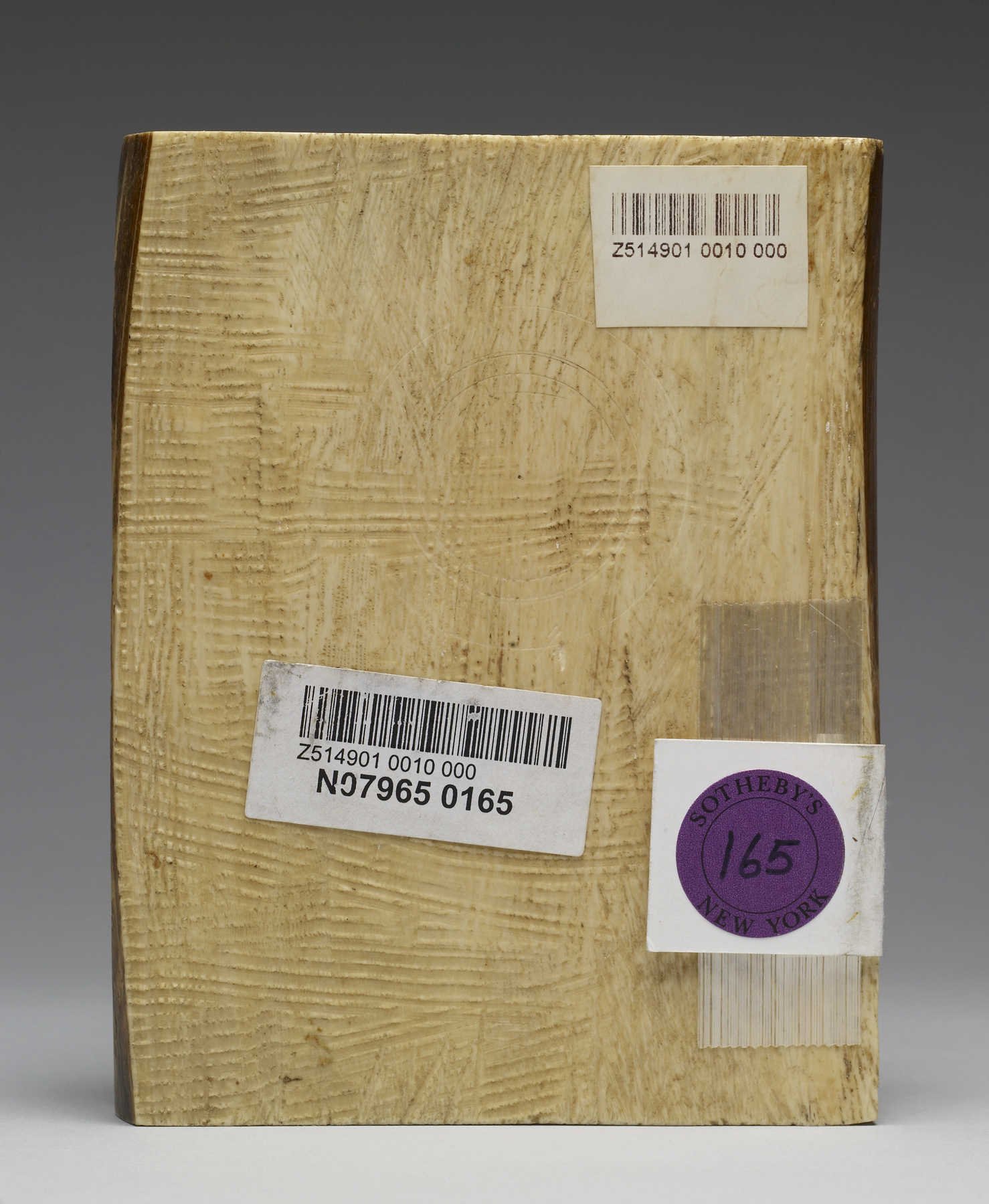Judith with the Head of Holofernes
(Baroque Europe )
Francis van Bossuit specialized in small ivory reliefs, preferring subjects that take advantage of the smooth and melting texture of carved ivory. Here, the soft sensuousness of Judith's naked shoulder contrasts with the rough features of the decapitated oppressor. Bossuit was renowned for "using ivory as though it were wax." This handling was probably influenced by his slightly older compatriots Artus Quelinus and Gerhard van Opstal. The artist was trained in Antwerp and Brussels but left for Italy around 1655. He remained there, chiefly in Rome, until 1685, after which he settled in Amsterdam.
The panel is carved in high relief with a concave background from a single section of elephant ivory, which makes use of the full diameter of the tusk. The darkened outer surface of the tusk is still intact along portions of the long sides of the relief, where its curvature is still evident.
Provenance
Provenance (from the French provenir, 'to come from/forth') is the chronology of the ownership, custody, or location of a historical object. Learn more about provenance at the Walters.
Sale, Sotheby's, New York, January 22, 2004, lot 165 ("property of a European gentleman"); purchased by Joaneath Spicer, Baltimore, January 22, 2004; given to Walters Art Museum, 2009.
Geographies
Italy (Place of Origin)
Measurements
H: 5 7/8 x W: 4 1/2 in. (15 x 11.4 cm)
Credit Line
Gift of Joaneath Spicer, 2009
Location in Museum
Accession Number
In libraries, galleries, museums, and archives, an accession number is a unique identifier assigned to each object in the collection.
In libraries, galleries, museums, and archives, an accession number is a unique identifier assigned to each object in the collection.
71.1221




